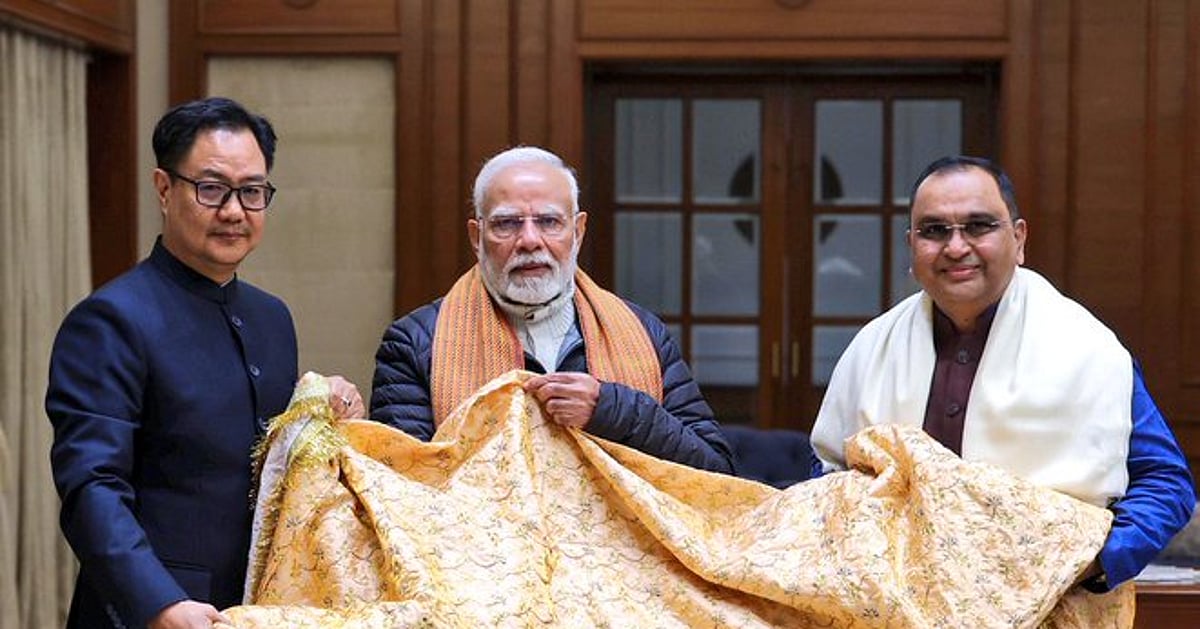 |
|
The offering of a ceremonial chaadar (cloth) by Prime Minister Narendra Modi at the Ajmer Dargah, a significant Sufi shrine in Rajasthan, India, has once again brought the delicate balance between religious harmony and political maneuvering into the spotlight. The event, timed to coincide with the 813th Urs (anniversary of the death) of Sufi saint Khwaja Moinuddin Chishti, saw Union Minister Kiren Rijiju representing the Prime Minister. While seemingly a gesture of religious respect, the act has been met with mixed reactions, highlighting the complex socio-political landscape of India. The timing, particularly in light of recent controversies surrounding religious polarization, raises questions about the intent behind the gesture, prompting both praise and criticism from different segments of society.
The act of offering a chaadar at religious sites is a long-standing tradition in India, often used by political figures to demonstrate religious tolerance and garner support from various communities. However, in the current polarized climate, such gestures are often interpreted through a political lens. Critics argue that such actions are merely symbolic displays intended to garner votes from minority communities without addressing the underlying issues of religious discrimination and intolerance. They point to instances of rising communal tensions and the government's policies, claiming that these acts are insufficient to counteract the negative impacts of divisive rhetoric and discriminatory practices. On the other hand, supporters view the gesture as a genuine act of respect towards a revered Sufi saint and an attempt to foster communal harmony. They argue that the Prime Minister’s message emphasizing unity and cooperation transcends political boundaries and fosters a positive message of togetherness.
The Prime Minister's message, calling for unity and cooperation among different religious groups, underscores the importance of interfaith harmony. However, the message's impact is tempered by the broader political context. The ongoing debates surrounding religious freedom, the protection of minority rights, and the prevention of communal violence overshadow the seemingly innocuous act of offering a chaadar. Consequently, the event becomes a stage for the ongoing dialogue – or rather, the often-heated debate – surrounding the relationship between religion, politics, and governance in a diverse and pluralistic nation. The question remains whether such symbolic gestures can effectively bridge the divides or merely serve as a temporary balm on simmering tensions. The effectiveness of such acts in fostering true religious harmony necessitates a comprehensive approach that addresses the root causes of religious polarization and actively promotes inclusivity and tolerance.
Analyzing the event requires examining the context in which it occurred. India's history is marked by both periods of significant religious harmony and episodes of intense communal conflict. Understanding these historical dynamics is crucial in interpreting the significance of the Prime Minister's actions. Furthermore, the event highlights the complex interplay between religious and political power in India. Political leaders often utilize religious symbolism to enhance their image and appeal to different segments of the population. Therefore, discerning the genuine intent behind such actions is challenging, requiring a critical examination of the larger political landscape and the government's policies. The ongoing discourse underscores the necessity of engaging in a balanced and informed analysis, rather than resorting to simplistic interpretations fueled by partisan loyalties.
Looking ahead, it's crucial to move beyond mere symbolic gestures and address the underlying challenges hindering religious harmony in India. This requires a multifaceted approach involving legislative reforms, educational initiatives, and community-based programs that actively promote tolerance, understanding, and respect among different religious groups. The government must actively tackle issues of religious discrimination and intolerance while engaging in meaningful dialogue with different faith communities. Furthermore, fostering critical thinking and media literacy is crucial to counteract the spread of misinformation and divisive rhetoric that often exacerbates religious tensions. Only through a comprehensive and sustained effort can India move towards a future marked by genuine religious harmony and social cohesion. The Ajmer Dargah event serves as a reminder of the ongoing need for dialogue and understanding in the quest for a more inclusive society.
Source: PM Modi sends 'chaadar' to Ajmer Dargah amid fresh controversy
